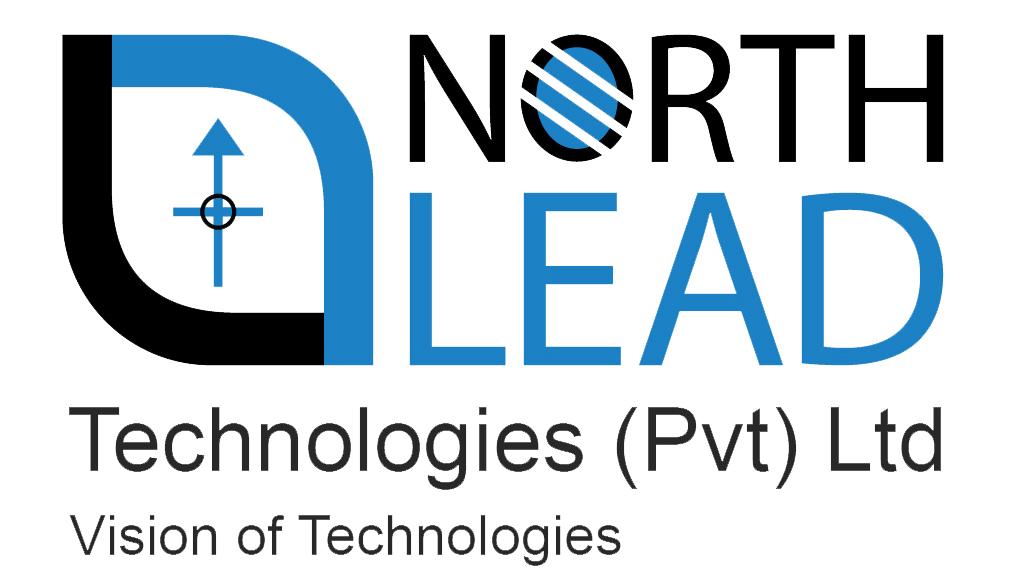Content
And this data is useful only for the initial verification process, it is not needed later on at all. Bob sees that the elements in the contract will cost X amount of gas. Accordingly, he will charge Alice for the amount of Gas he used up. Theoretically speaking, Ethereum is supposed to process 1000 transactions per second. However, in practice, ethereum is limited by 6.7 million gas limit on each block. Consortium – Finally, we prepare the Consortium for blockchain service which decides the mechanism of node management like voting, multi-node approval to name a few.
During these meetings, there was never a unanimous decision to adopt the Lightning Network. Instead, several developers and miners were in favor of increasing the block size limit as a way to increase the number of transactions on the Bitcoin blockchain. In order to reach a peaceful agreement between both parties, a hard fork was created, which provided two different solutions to the scalability dilemma. How to fix a scalability problem in the blockchain of your choice.
Consequently, users no longer have to pay mining fees or wait for prolonged periods for block confirmation. It focuses on leveraging smart contract functionalities over the main blockchain network in private, off-chain channels. The off-chain channels could offer faster transactions with limited fees.
When our company researched firms to guide us through the ICO/STO decision process, Applicature was the clear front runner. Applicature offered multiple layers of service, tailored to our needs, all priced competitively. And, applicature took the time to understand our business before offering advice. While leaderless seems to provide a path for solving the scalability trilemma, they are currently largely experimental. We need to wait for the “6 blocks confirmation” to ensure that the block is not reversible.
Issues In Existing Blockchain ?
Sidechains can be used to offload from the mainchain by moving certain applications on the sidechain. Sidechain is one of the promising solutions to the scalability problem if inter-blockchain communication becomes more efficient. Blockchain scalability is arguably the holy grail and bottleneck of the cryptocurrency world and mainly refers to transaction speed. At the moment, the transaction time of crypto doesn’t compare to other payment methods. In the case of every transaction on the blockchain, it is broadcasted across all nodes.
A blockchain wire protocol can be upgraded on-the-fly as two wire protocol versions living together is possible. We define the scalability bandwidth as the transactions processed per second by the optimal computer, for a certain type of transactions. For easier reasoning, it’s simpler to think of the reciprocal magnitude. We define the scalability bottleneck as the What is Bitcoincash average time it takes to process a certain type of transaction for a certain blockchain state on the optimal computer. Protocol – This is the stage where you select the right protocol as Azure Blockchain Service supports Quorum, Ethereum, Corda, Chain or Hyperledger Fabric protocol. Scalability refers to how well a system can manage increasing amounts of data.
The transaction records stored on the blockchain are verified by nodes. However, blockchain technology has issues with scalability where some blockchains take a long time for transactions to be validated. You might also consider Proof-of-Authority as a viable option among blockchain scalability options. It’s a scalable consensus method with a reputation-based consensus algorithm. The chosen nodes are in charge of validating network transactions using the Proof-of-Authority consensus technique. In place of layer 2 scalability solutions, Plasma is also an outstanding blockchain scalability solution.
Each participant in the group will reach a decision that will provide the greatest individual benefit. The group must listen to each recommendation and decide which of them will provide the greatest overall benefit. The final recommendation must be accepted by all group members regardless of whether it offers the best solution for each individual. Typically, it takes about 10 years before the average consumer makes an effort to research a new product or service. By this time, approximately 10% to 20% of the overall population had adopted the innovation. The remaining 80% to 90% of the population is still on the sidelines, unwilling to implement this new technology into their daily lives.
The Bitcoin community could not reach a consensus agreement concerning scalability. All transactions within the Lightning Network occur off-chain. The second solution involved the creation of a new payment protocol. This week, we will investigate how to solve the consensus problem. To do this, we will first investigate how to solve consensus when failures cannot occur in the network. Later on, we will learn how to solve consensus when processes may fail, first through crash failures and then when processes can behave arbitrarily.
- These scale-out versions are also called sharding or lightning.
- A bank or a credit card provider, for example, may operate as a third-party company in the execution of a digital payment or money transfer transaction between two entities .
- The experience of building over 100+ platforms for startups and enterprises allows Akash to rapidly architect and design solutions that are scalable and beautiful.
- As the number of blockchain users grows, layer one gets strained.
- Miners compete with this on the blockchain network to create transactions into valid blocks.
DBFT is basically a BFT variant focused on the division of nodes into two different forms such as ordinary nodes and bookkeeping nodes, also referred to as delegates. The DBFT consensus mechanism operates just like the democratic process in a country. Token holders and ordinary nodes could vote for delegates, who are randomly selected for verification and validation of transactions. Presently, you can find different types of solutions under development for addressing the problem of blockchain scalability.
Bitcoin’s Lightning Network is an example of a layer two blockchain. In the blockchain architecture’s distributed network, each participant watches, approves and updates new entries. Blockchain technology is made up of a series of blocks that contain transactions in a predetermined order.
The application acts as the user-facing front end, while the blockchain stack performs as the back end. Specifically, the key ingredients of the application layer are scripts, application programming interfaces , user interfaces, frameworks, smart contracts, and decentralized apps . When the channel is closed, the distribution of assets is processed. Money is distributed using the latest signed balance in the ledger. And after completion of the channel work, the data from it is submitted to the main chain.
Block Size
For off-chain solutions, projects can achieve TPS of above a million with the Lighting Network and potentially even infinite TPS with Plasma. https://xcritical.com/ problem as an on-chain scaling solution. Based on distributed databases, sharding is presently one of the notable layer-1 scaling solutions for blockchain networks. Sharding involves breaking down transactions into smaller data sets which are referred to as ‘shards’. The network then processes the shards simultaneously in parallel, thereby enabling sequential work on multiple transactions. With the help of sharding, the information could be divided among different nodes while ensuring consistency of information.

In a proof-of-work system it will be easier to attack shards with lesser hashrate. There needs to be a mechanism to know which node implements which shard. This needs to be done in a secure and efficient way to ensure parallelization and security. If the transaction group gets in, then the global state root becomes the post-state root of that particular shard ID. The state root represents the entire state, and as we have seen before, the state is broken down into shards, which contain their own substates. Transaction group has transactions which belong to only that shard ID and are unique to it.
Lightning Network
Most likely, it will occur much faster than the internet, mobile phones, automobiles, or air travel. Because once the blockchain infrastructure is in place, the old ledger system becomes useless. Therefore, soon, consumers will not have to choose between the new digital ledger and the old manual ledger. Companies that won’t migrate to the blockchain will be left behind and eventually forced out of business. The key to successfully thwarting a blockchain hack is to identify the threat and understand the nature of the attack as quickly as possible.
After that, the two parties deposit a certain amount of cryptocurrency. A payment is considered to be validated if it’s added to a block in the chain. For this, miners create new blocks and insert the data into them.
When one participant sends cryptocurrency to another, the information about the new payment is sent to the node, creating a new block and adding data to it. After this, the payment is considered to be processed, and the recipient receives money from the sender. Segwit is a protocol upgrade for Bitcoin that changes the way and structure of how data is stored. The original intention of segwit was to solve the transaction malleability problem. The digital signature that verifies the ownership and availability of the sender’s funds takes up a lot of space in a transaction. Therefore, removing it would allow more transactions to be included in one block.
We have a growing portfolio of internally ideated, incubated and scaling companies. Classical consensus are the traditional algorithms that have been researched before the invention of Bitcoin. They focus on fixed peer-sets with multiple rounds of voting for reaching consensus within the whole network. Examples of classical consensus include Paxos, Raft, pBFT, and more.
Bitcoin
It is vital to note that the digital signature for validating the sender’s ownership and availability of cash takes up around 70% of the total space in a transaction. The removal of the digital signature may free up additional space for the addition of new transactions. As we mentioned, the Bitcoin community held several meetings in July 2017 in an effort to solve the scalability problem.
The sidechain operates as a transactional chain next to the Blockchain in big batch transactions. In comparison to the primary chain, sidechains use distinct consensus techniques. The third-party controls and manages practically all of the stakeholders’ information participating in the online transaction in a consolidated way. This method necessitates the involvement of a third party to ensure the transaction’s security.
Bitcoin Cash Scalability
Decentralization might be sacrificed in return for scalability if the transactions are outsourced. Layer two approaches are by far the most popular approaches for solving scaling issues. Nested layers, rollups, and sidechains are examples of layer two architectures that have addressed the blockchain challenges.
How Does Blockchain Compare To Other Innovations?
All data should be registered with accuracy, otherwise, the level of trustworthiness can be diminished. When two blockchains become this big, it’s not possible to run a node for both of them. After each transaction, Alice and Bob confirm and update the balance sheet of their copies, which records the number of coins each one possesses.
Why Does Blockchain Scalability Matter?
On the other hand, country channels serve as network-enabled services connected with the help of a smart contract or multi-sign method. Once a task or series of tasks in a state channel has completed, the appropriate Blockchain records the final ‘status’ of the ‘channel’ and any related transactions. Blockchain scalability challenge refers to improving consensus protocols. Renowned blockchain networks such as Bitcoin presently use the Proof of Work consensus protocol. Even if the Proof of Work consensus mechanism offers reliable security, it is considerably slow. Therefore, many blockchain networks are looking towards the Proof-of-Stake consensus mechanism as a promising solution for blockchain scalability issues.
The PoW system will automatically adjust the difficulty, and the network can tolerate any number of nodes that exist in the network. Scalability is an important requirement in blockchain networks as it refers to the network’s ability for supporting higher transaction throughput. Therefore, scalability is highly essential for the future growth of blockchain.







